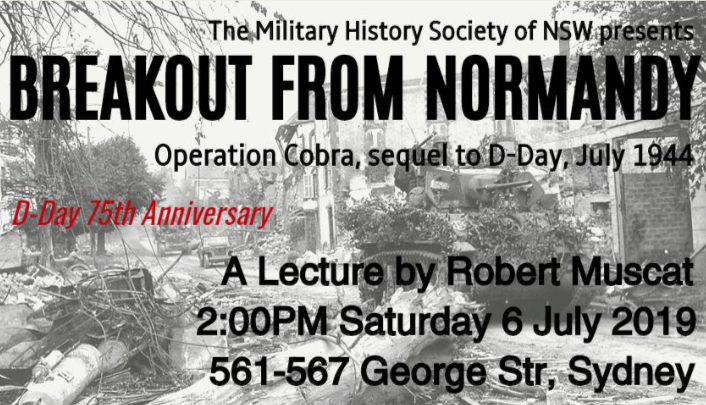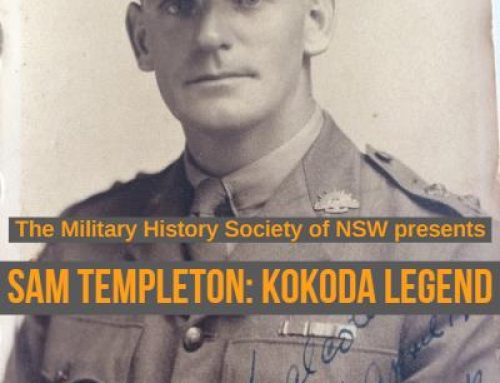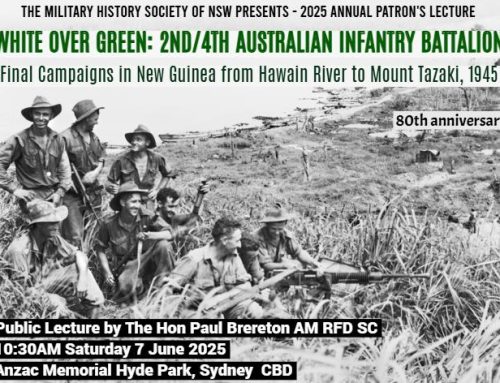The Military History Society of New South Wales Incorporated presents
Breakout from Normandy
By Robert Muscat

This lecture is the Society’s contribution to 75th anniversary commemorations of D-Day.
By end June 1944 the word most feared by Allied senior commanders and politicians was “stalemate”. US First Army and British Second Army units made few inroads into Normandy since the D-Day landings on 6 June. They faced stiff German resistance, impassable terrain and unpredictable weather.
General Omar Bradley’s First Army faced two natural obstacles, the Cotentin bogs and ubiquitous hedgerows. Divisional commanders resorted to throwing away Army field manuals, relying on intuition and innovation to find a way out. Eisenhower was equally concerned about the “slow and laborious” advance of the Normandy front. If there was to be a breakout it would happen in the American sector, he thought.
Bradley came up with Operation Cobra, scheduled to commence late July while Generals Montgomery and Dempsey devised Operation Goodwood, starting a few days earlier. The Germans would be compelled to move their reserves, allowing greater scope for an American breakthrough. The final phase would activate US Third Army under General George Patton, driving the capture of vital ports along the Brittany coast.
Biography – Robert Muscat
Robert Muscat is President of the Military History Society of NSW. He holds a Masters’ degree in education and is currently a high school principal in Sydney. He was formerly a rifleman in the Australian Army Reserve and has spoken and written about military history in various forums. His last lecture was about Monash at the Battle of Hamel.
Saturday 6 July 2019, 2.00pm – 3.00pm
Goulburn Room, Level 4, City of Sydney RSL, 561-567 George Street, Sydney
For further information call 0419 698 783 or email president@militaryhistorynsw.com.au
Although entry is free, a gold coin donation is appreciated.






